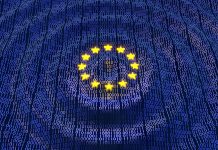To encourage the use of data in improving sustainability, the EU is working on a new proposal – the Ecodesign for Sustainable Products Requirements (ESPR)
In an increasingly climate-aware world, a large business not focusing on improving its carbon footprint is leaving itself open to significant criticism. Consumers are increasingly becoming concerned with whether the materials used to make the items they buy are sustainably sourced and made in environments with good labour conditions.
As a result, supply chain traceability is being more widely discussed and embraced, particularly in the fashion industry. This is when different elements of a product can be tracked as it moves from being a raw good to a finished product.
To encourage the use of data in improving sustainability in a transparent fashion, the European Union (EU) is working on a new proposal expected to be introduced later this year, the Ecodesign for Sustainable Products Requirements (ESPR).
Circularity, energy performance and sustainability of products
The ESPR aims to establish a framework to improve transparency around circularity, energy performance and environmental sustainability of products among product manufacturers, dealers, importers and distributors. One of the most important industries covered by the ESPR is textiles, which had the fourth-highest impact on the environment in Europe in 2020.
Once ESPR is launched, only textiles products that fulfil the framework’s requirements, such as product durability, reusability, upgradeability and reparability, will be allowed to go on the EU market, helping to reduce waste in the industry.
only textiles products that fulfil the framework’s requirements will be allowed to go on the EU market, helping to reduce waste in the industry
While the ESPR is expected to positively impact circularity, there are concerns that some areas of the new framework could cause intellectual property protection issues for the businesses impacted. For example, one of the rules is that all products sold within the EU must include a digital product passport.
The passports will allow products to be tagged, identified, and linked to data relevant to their circularity and sustainability, to provide better consumer choices, improve transparency and help national authorities in enforcement and surveillance.
However, the use of digital passports could leave intellectual property at risk. The data being tracked could make it more challenging to protect ‘trade secrets’, which many businesses argue is essential to protect their competitive advantage.
Cost structures, manufacturing principals, and manufacturing optimisation
Trade secrets in the textile manufacturing supply chain, for example, historically lie within cost structures, manufacturing principals, and manufacturing optimisation. If this information is disclosed, it loses its status as a trade secret, and the holder cannot prevent third parties from using it.
The ESPR is pushing us to reconsider how we approach trade secret management, and there is no one-size-fits-all approach. However, as the regulation launch draws closer, it is important for manufacturing businesses to ask themselves what they can do to protect their intellectual property.

At the earliest, the ESPR will be adopted in 2023. Business leaders need to prepare sooner rather than later to have full confidence that their trade secrets are protected. One way they can best protect their businesses is to consider registering patents to maintain control of assets.
Investing in patent protection can allow a business to cover different aspects of an invention, for example, unique fabric manipulation techniques could be protected within a textile product. Therefore, even if the manufacturing process of an item is disclosed, the legal right to make or sell the item still sits with the relevant company.
Layering in business information
Another way for a business to protect its trade secrets is through layering, in which information, knowledge, insights, and data are structured into strategic layers to support a business. If we consider textiles, valuable information in the manufacturing process can range from pricing details to product formulas.
The ESPR will affect almost all manufacturers and producers in the EU when it comes into play
If information is grouped and protected into layers, it makes it easier for businesses to then identify any potential risks or opportunities for every kind of information. However, it does require businesses to understand which information will be made publicly available under the ESPR, to determine how it should be structured and protected.
The ESPR will affect almost all manufacturers and producers in the EU when it comes into play, with textiles businesses being particularly vulnerable to the IP issues associated with it. Now is the time for businesses to be proactive about consulting with IP professionals to make sure their intellectual property is covered to avoid losing their trade secrets to competitors.
Erik Oskarsson, Principal and Country Manager at Rouse, Sweden and Love Fält, Senior Associate at Rouse, Sweden



























